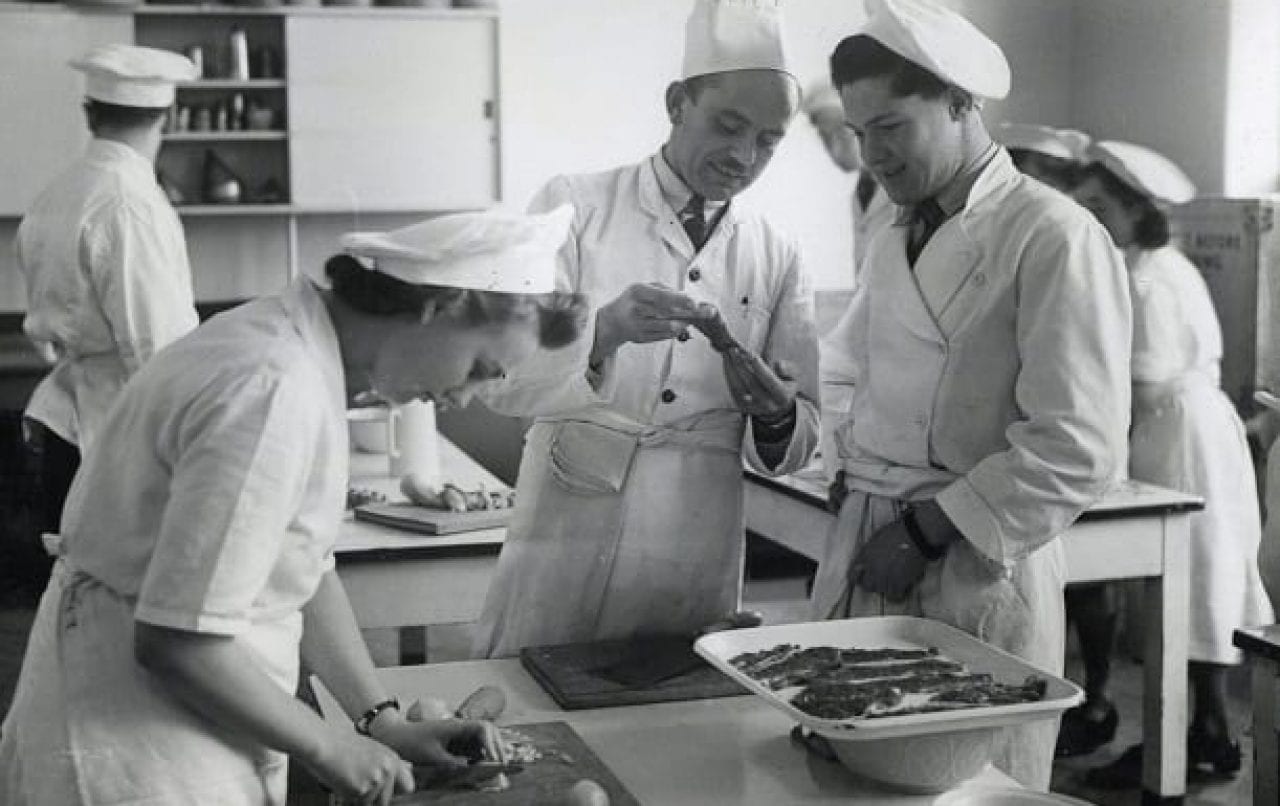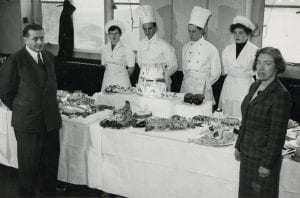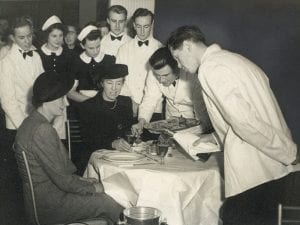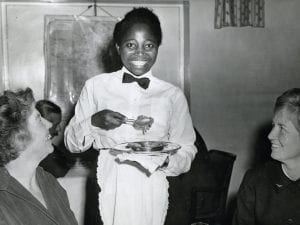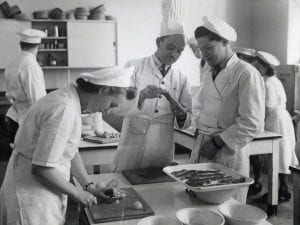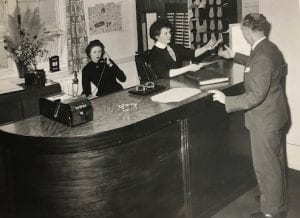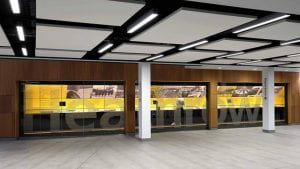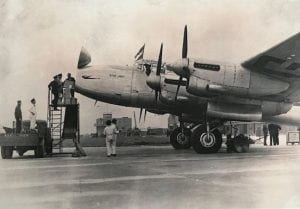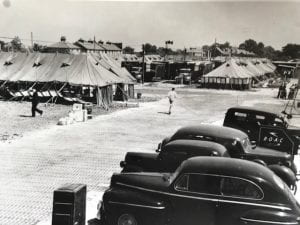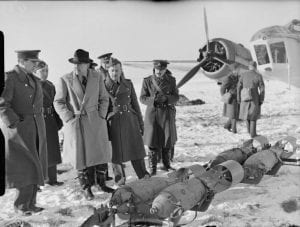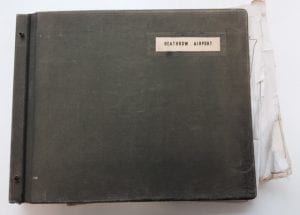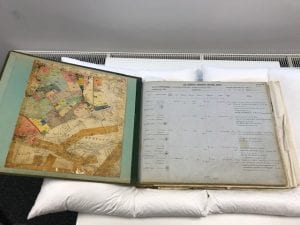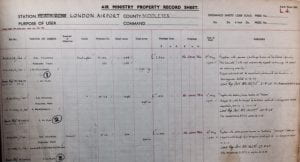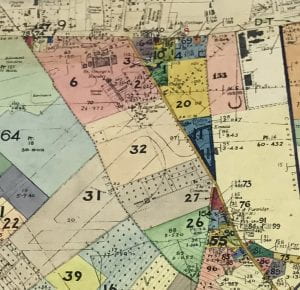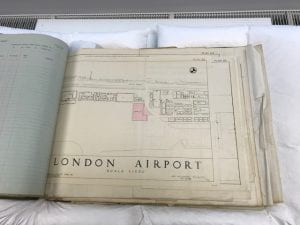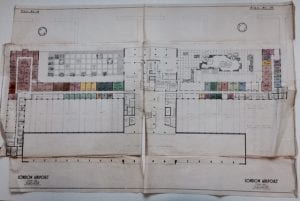UWL archives hold the records of The London Geller College of Hospitality and Tourism (LGCHT) which began teaching over 70 years. The archive has been catalogued and descriptions are now available to search on UWL archives’ online catalogue www.archives.uwl.ac.uk. The collection includes a number of interesting photos from early on in the life of the College, some of which are featured within this article.
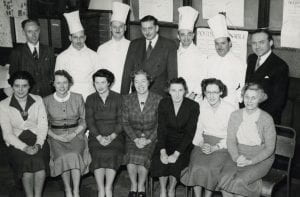
College staff, 1953: Mr. P. B. White, Mr. V. Ceserani, Mr. E. Jonckheere, Mr. R. G. Hudswell, Mr. S. Grey, Mr. F. P. Sharman, Mr. B. A. Liebold, Mrs. J. Bowes, Miss N. Brien, Mrs. N. Bradley, Miss E.F. M. King, Miss K. Witchell, Miss M. Hisee, Mrs. G.G. Cook
The LGCHT began as the Acton Hotel and Catering School opening in 1948.
The school developed a worldwide reputation under the experienced leadership of Mary King and Gerry Hudswell and other staff from within the hotel and catering industry. Victor Ceserani joined the college a few years later and the School left Acton Technical College (Woodlands Parade, W3) to become part of Ealing Technical College in 1957. The School brought with it a reputation for being one of the top training schools in the country with students going on to work in top restaurants in Paris and London, and many also going on to work as cabin staff for airlines such as BOAC (British Overseas Airways Cooperation) and BEA (British European Airways).
The School moved into the present location at St Mary’s Road, Ealing in 1962 as The Ealing School of Hotel Keeping and Catering. The East wing was added to the College to house the additional students and in 1962 a restaurant was opened where the public could eat lunch for approximately 35p cooked by trainee chefs and served by the hospitality students, a forerunner for ‘Pillars’ restaurant at UWL today.
In the beginning catering students kept handwritten notes of recipes taken down from the blackboard however Ceserani and fellow lecturer Ronald Kinton decided to print recipes leading to the publication of ‘Practical Cookery’ which went on to become a popular textbook for catering students across the country.
In 1975 Ealing Technical College was turned into Ealing College of Higher Education. Influential catering lecturer Ceserani retired in 1980 and the School continued to develop expertise in management education. In 1991 the Ealing College of Higher Education merged with Queen Charlotte’s College and Thames Valley College to form the Polytechnic of West London and became Thames Valley University a year later. This was a time of expansion for the college and saw the introduction of the Postgraduate Diploma of Hospitality Management and the strengthening of international links. The following decades saw the development of honours degrees in culinary arts and the introduction of foundations degrees in Hospitality Management. The school was renamed the London Geller College of Hospitality and Tourism in 2016 in honour of the University Chancellor and Alumnus, Laurence Geller, CBE.
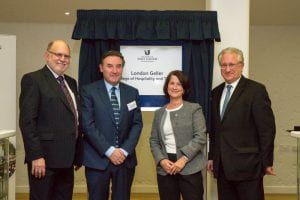
2016, from left to right: Chris Humphries,CBE (UWL’s Chair of the Board of Governors), Professor Peter John (UWL’s Vice Chancellor) with Ruth and Laurence Geller,CBE
The College continues to offer provision in Culinary Arts, Hospitality and Hotel Management as well as Aviation, Tourism, Events, Leisure and Transport Management at degree and post graduate levels. In 2018 the Heathrow Exhibition was opened at the Ealing Campus, with links to the aviation courses available at UWL which have been expanded further with the introduction of the Aviation Management and Commercial Pilot License degree beginning in 2019.
For more information on the collections available at UWL archives, see the UWL archives web page: https://www.uwl.ac.uk/library/library-services/university-west-london-archive
